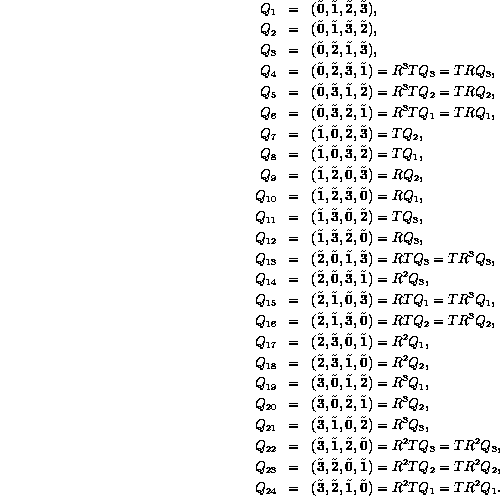Since tiling patterns
![]() ,
, ![]() ,
, ![]() ,
, ![]() are orthogonal with each other,
perfect-magic squares can be obtained by
are orthogonal with each other,
perfect-magic squares can be obtained by
![]()
where ![]() and
and
![]()
Therefore, there are ![]() perfect-magic squares.
The possible combinations are given by
perfect-magic squares.
The possible combinations are given by

The number of independent perfect magic squares is given by
![]()
The factor ![]() comes from the definition in which
we take
comes from the definition in which
we take ![]() and its transposition
and its transposition ![]() is identical.
The factor
is identical.
The factor ![]() appears, since
we take
appears, since
we take ![]() ,
and its rotations
,
and its rotations ![]() ,
, ![]() ,
, ![]() are identical.
Therefore, there exist three identical perfect-magic squares
which are
are identical.
Therefore, there exist three identical perfect-magic squares
which are

These perfect-magic squares correspond with those given by Grogono.